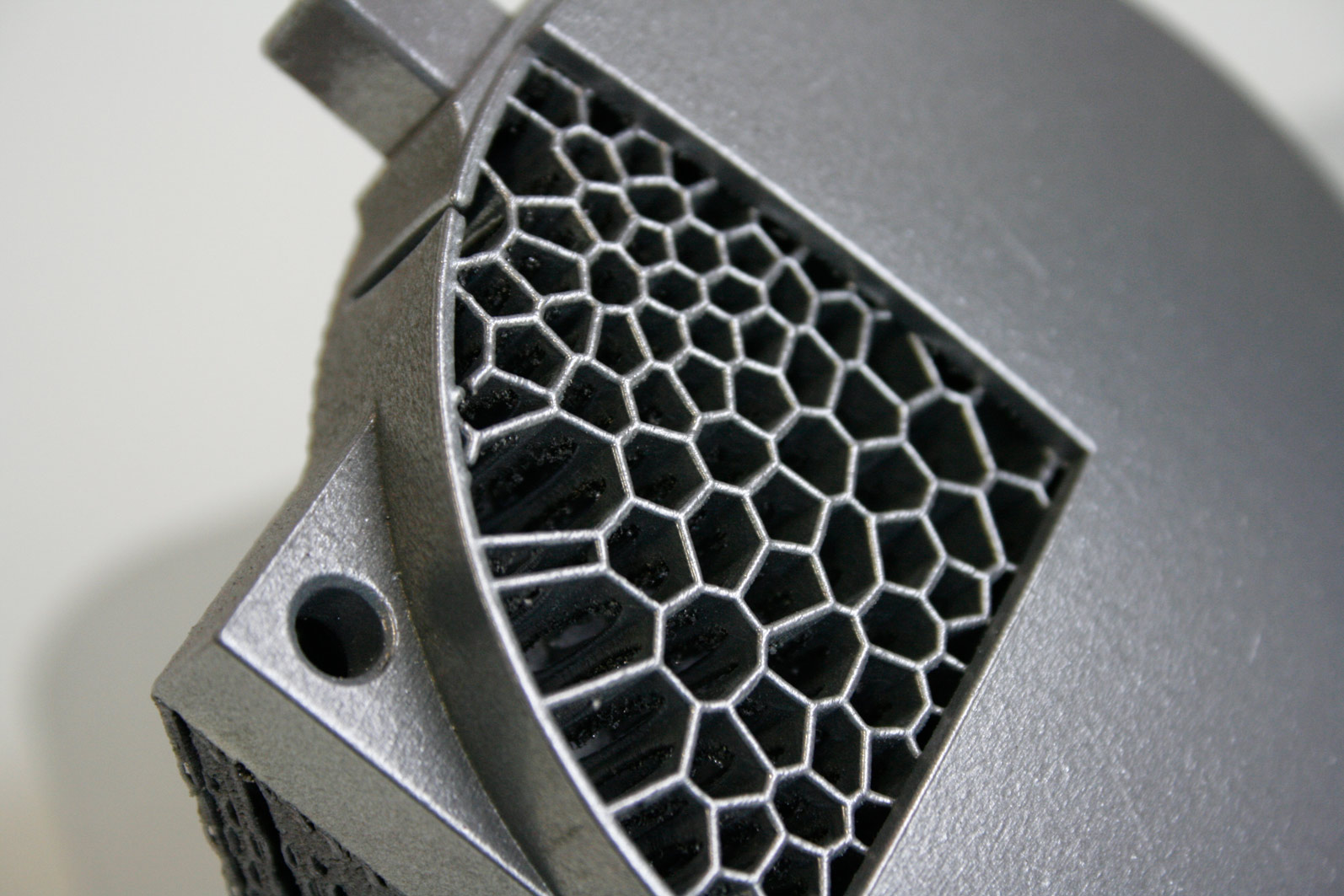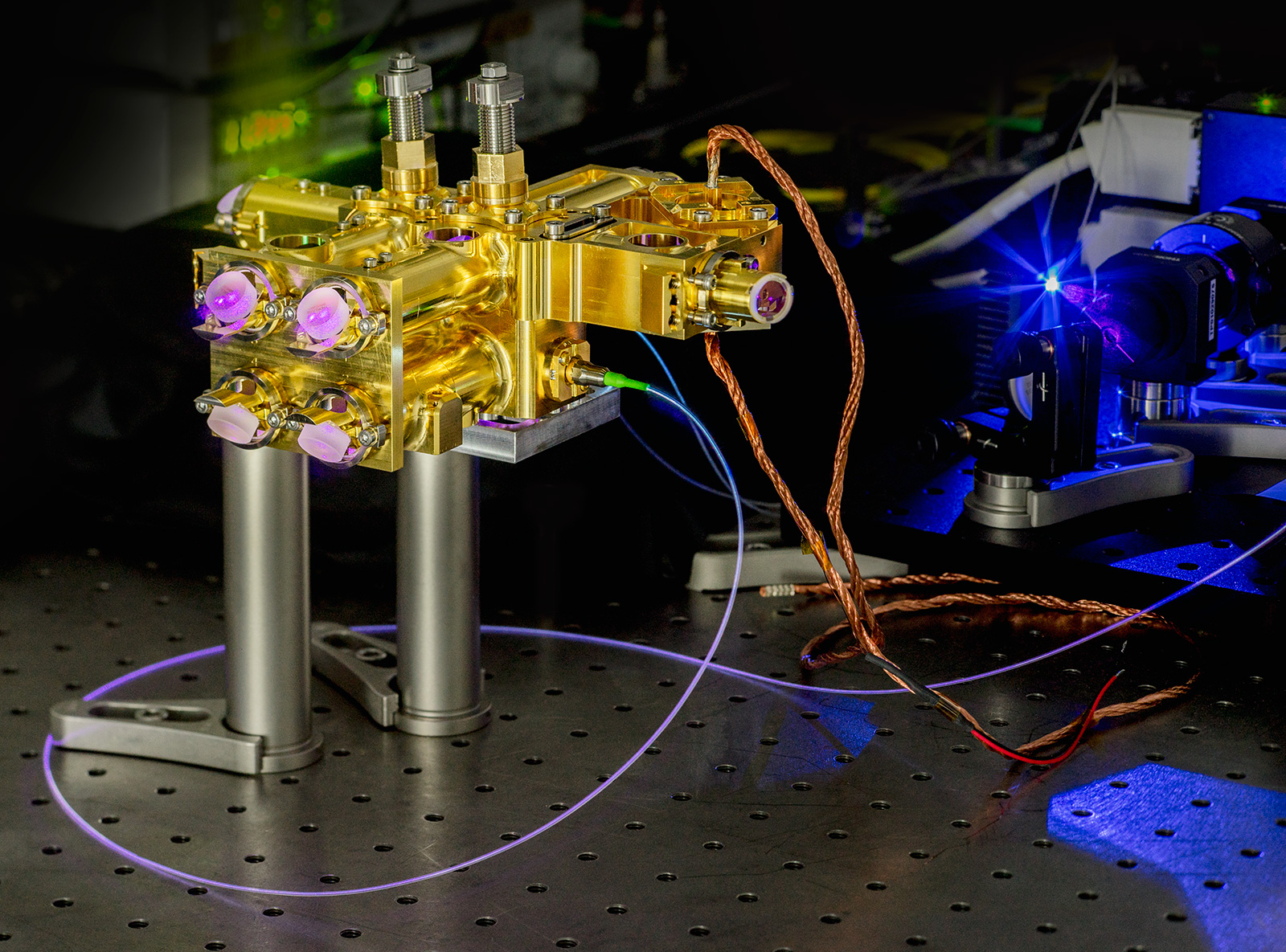Photonics West 2018
Quantum laser unit at Photonics West 2018
Quantum technologies will be one of the major trends in 2018. The core of the-se future technologies are sophisticated laser systems. Fraunhofer Institute for Applied Optics and Precision Engineering IOF from Jena, Germany, presents such a space born system at this year’s Photonics West exhibition, together with a number of other photonics innovations.
End of January the global photonics community will meet again in San Francisco for the Photonics West. A congress with about 5.200 presentations and an exhibition with roughly 1.300 exhibitors and more than 20.000 visitors make it the largest photonics event in 2018. Among the key trends for the new year there will be quantum technologies with multi-billion programs starting in 2018, additive manufacturing or new fiber technologies. Fraunhofer Institute for Applied Optics and Precision Engineering IOF from Jena, Germany, contributes to all these trends with a number of new technologies and solutions for research and industry.



Organic nanostructures for broadband AR coatings
A perfect antireflection coating should work over a large bandwidth and, if possible, under many different angles. If optics are complex shaped, it becomes difficult to achieve perfect AR-properties over the whole surface. This may happen on freeform lenses in automotive and consumer optics or on microoptics, to name just a few examples. The experts at Fraunhofer IOF come close to it with their new AR-plas2® technology. It offers low reflectivity from the UV up to the near IR or from 300 to 1.700 nm. It uses a low temperature plasma process and a combination of inorganic layers and organic nanostructures. A refractive index lower than 1.1 on the outermost surface of the nanostructured coating guarantees a low residual reflectance for a broad range of light incidence angles. It works on large lenses as well as on microoptics or Fresnel lenses. The technology is well suited for economic large scale processes.
Additive Manufacturing of metal mirrors saves 75% weight
Scanner mirrors and space born telescope mirrors have one thing in common: Every gram counts. So these are typical cases for light-weight structures. Conventional techniques with back pockets and drilled structures allow for weight reductions of more than 30%. But a dedicated design and an additive manufacturing process enable weight reductions of more than 65%. The team from Fraunhofer IOF uses Selective Laser Melting to manufacture metal mirrors. Due to the lightweight design with stochastic or symmetric structures, a mass reduction of up to 75% is achieved. Several materials have been qualified, such as AlSi12, AlSi40, and Al6061. Mirrors of 150 mm exhibit high stability and stiffness along with surface roughness of <1 nm RMS and form deviation of <150 nm PV after post finishing.
Laser equipment for quantum key distribution
Quantum technology is certainly one of the biggest trend topics at Photonics West 2018. While China has taken the lead in this field, Europe will catch up with a 1-billion-Euro flagship project in 2018. At the core of most such projects there is sophisticated laser technology for the preparation and measurement of quantum mechanical properties of photons or atoms. A new satellite-based source for entangled photons will be shown at the Photonics West exhibition. Funded by the European Space Agency ESA, a team From Fraunhofer IOF has transformed ideas from research at the world-famous Institute for Quantum Optics and Quantum Information (IQOQI) in Vienna, Austria, into an engineering qualification model. Furthermore, they are working on special adaptive optics for ground- and space-based optical terminals. This quantum technology will be part of a new generation of space-based laser systems that will allow faster and more secure communication among satellites and between satellites and ground stations.
For more information please visit Fraunhofer IOF at the Photonics West on booth number 4529-29.
Industry panel - Next Generation Fiber Technology: Perspective and Roadmap
The team from Fraunhofer IOF will perform more than 20 scientific presentations, workshops and short courses at the Photonics West congress. A main focus will be on new fiber technologies. This will also be in the focus of an industry event, where experts from Fraunhofer IOF and the Friedrich Schiller University Jena will share their recent findings on next generation fiber technologies.
Tuesday 30 January 2018 · 1:30 pm to 2:30 pm
Speakers:
- Prof. Andreas Tünnermann,
- Prof. Jens Limpert,
- Dr. Thomas Schreiber,
- Dr. Kevin Füchsel